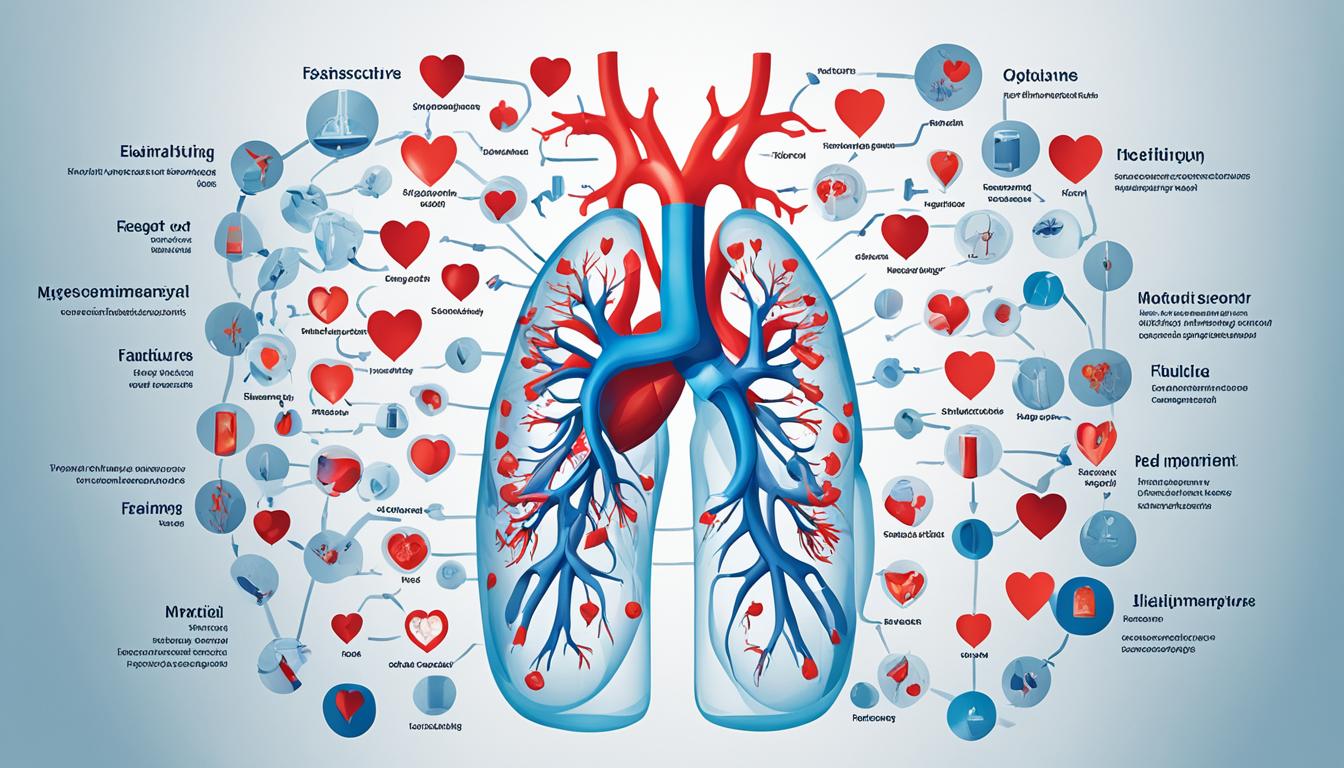Heart failure, also known as congestive heart failure, happens when the heart can’t pump blood well. This failure causes fluid to build up in the lungs. People with this condition feel short of breath and face other serious symptoms. Narrowed arteries, high blood pressure, and heart valve problems can cause heart failure.
Heart failure symptoms can vary. You might feel short of breath, tired, or see your legs swell. Other signs include a fast or irregular heartbeat, feeling like you can’t exercise as much, and coughing up blood. If you notice any of these, get medical help right away. Heart failure can be life-threatening.
Treating heart failure involves changing your lifestyle, taking medicine, or getting a heart transplant. But there’s something new on the horizon: stem cell therapy. This therapy is a modern way to fix or replace damaged heart cells. It could help the heart work better in people with heart failure.
Key Takeaways:
- Heart failure occurs when the heart muscle is unable to efficiently pump blood.
- Symptoms of heart failure include shortness of breath, fatigue, swelling in the legs, rapid or irregular heartbeat, reduced ability to exercise, and coughing up blood.
- Treatment options for heart failure include lifestyle changes, medication, and in some cases, a heart transplant or device to assist with pumping blood.
- Stem cell therapy is an innovative approach being researched to potentially repair or replace damaged heart cells and improve heart function in patients with heart failure.
- Further research is needed to fully understand the potential of stem cell therapy for heart failure and optimize its use.
Stem Cell Therapy for Heart Failure
In recent years, stem cell therapy has gained ground as a treatment for heart failure. It brings hope to many people with this serious condition. Scientists are studying various stem cell types to find new ways to tackle heart failure.
Some stem cells come from the heart itself. This gives them the power to directly repair heart cells. Others can change into different cell types, including heart muscle cells. This makes them useful for treating heart failure. A third type of stem cell helps grow new blood vessels. This is important for getting blood flowing again in damaged heart tissue.
Stem cells can come from bone marrow, fat, or even umbilical cord blood. Researchers are looking into the best ways to get and use these cells for treating heart failure.
Although stem cell therapy for heart failure isn’t widely available yet, studies are happening. These studies look at how safe and helpful this therapy is. They also check the best ways to put stem cells into the heart, like with injections or IV drips.
Early research is promising. It suggests that people who get stem cell treatment might see their heart health and life quality improve. But we need more studies to know the full effects and the best ways to use stem cell therapy for heart failure.
Advantages of Stem Cell Therapy for Heart Failure
Stem cell therapy has several benefits for heart failure treatment:
- Regeneration of the damaged heart muscle and tissues
- Promotion of angiogenesis, the formation of new blood vessels
- Modulation of the immune response to reduce inflammation
- Potential reduction in scar tissue formation
- Possibility of improving heart function and quality of life for patients
These advantages make stem cell therapy a promising research field. It offers hope for better heart failure treatments in the future.
The Future of Stem Cell Therapy for Heart Failure
Stem cell therapy is showing promise in treating heart failure. It needs more research to better understand its potential. Stem cells could regenerate heart tissue, offering hope for better treatments.
But, many questions remain about using stem cells for heart failure. Scientists are working hard to find the best cell type for transplant. They also want to know if using a patient’s own cells is better than donor ones.
Questions also linger about cell handling before transplant, the right dose, and the best way to give the cells. Trials and studies are happening now to find these answers. They aim to check the safety and success of using stem cells in heart failure. Getting these answers helps improve treatment plans for these patients.
The future looks bright for using stem cells to treat heart failure. If research continues, we could see big changes. These could include regenerating heart tissue and new treatments. This could be a game-changer for improving the lives of those with heart failure.

